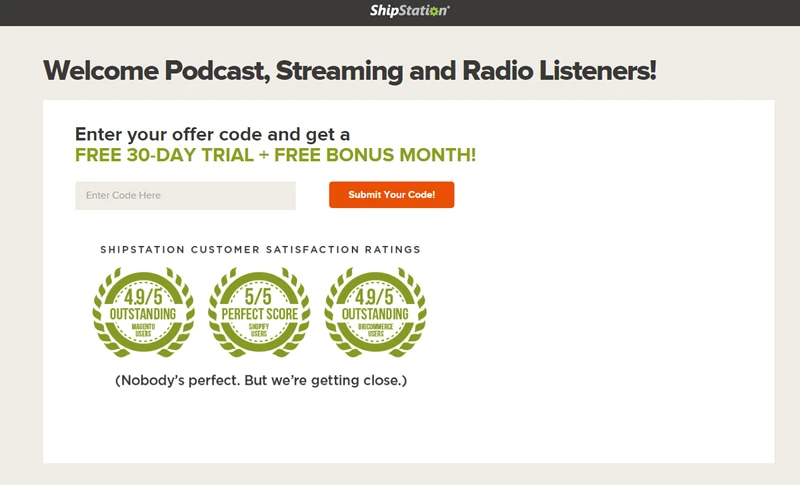Learn how to run a successful podcast advertising campaign
We've created this guide to help you become successful at running your own podcast advertising campaign. We break down the process into 9 easy steps
 Determine your podcast campaign advertising budget
Determine your podcast campaign advertising budget
Before you start your first podcast advertising campaign, you need to determine how much money you will spend. This amount determines how many listeners you will reach with your message. Industry standards show the average cost to reach 1,000 listeners is between $18-$25. We are seeing many of our publishers price below this in the $10-$15 range. So this means you can reach an estimated 1,000 people for every $15. Here is a quick table to guide you with how many listeners you can reach and your campaign ad spend:
Reach 10,000 Listeners = $100 ($10 CPM) $150 ($15 CPM) $200 ($20 CPM)
Reach 20,000 Listeners = $200 ($10 CPM) $300 ($15 CPM) $400 ($20 CPM)
Reach 50,000 Listeners = $500 ($10 CPM) $750 ($15 CPM) $1,000 ($20 CPM)
Reach 100,000 Listeners = $1,000 ($10 CPM) $1,500 ($15 CPM) $2,000 ($20 CPM)
Reach 500,000 Listeners = $5,000 ($10 CPM) $7,500 ($15 CPM) $10,000 ($20 CPM)
Reach 1,000,000 Listeners = $10,000 ($10 CPM) $15,000 ($15 CPM) $20,000 ($20 CPM)
Reach 5,000,000 Listeners = $50,000 ($10 CPM) $75,000 ($15 CPM) $100,000 ($20 CPM)
 Choosing the right podcasts
Choosing the right podcasts
Now that you have defined your ad budget, it's time to start choosing shows for your campaign. There are a few ways to go about doing this and we recommend this method will give you the best results.
First, we recommend choosing 1-3 larger shows that fall in your niche. Use the categories within our marketplace to find matching shows. For instance; If your customer base is mostly sports enthusiasts, choose shows from our sports category. If you cater to a health conscious customer, check out the shows in our health category. No matter your niche, you'll be sure to find a key show that makes sense for you.
Second, we recommend buying a bundle (group) of shows with your remaining ad budget. You could try your ad on 10-20 smaller shows and see if this provides an ROI for you. Ideally buy small shows that still relate to your business niche.
 Choosing ad spots/placements
Choosing ad spots/placements
Now that you've found some great shows to advertise on, it's time to determine which ad spots to buy. We recommend buying 10, 30, and 60 second spot ads.
Here are some common podcast ad placement buys per episode:
Here are some common podcast ad placement buys per episode:
One Ad Per Episode
30-Second Audio Ad (Pre-Roll)
60-Second Audio Ad (Pre-Roll)
60-Second Audio Ad (Mid-Roll)
Sequence of Ads Per Episode
10-Second Shout-Out (Pre-Roll) 60-Second Audio Ad (Mid-Roll)
30-Second Audio Ad (Pre-Roll) 60-Second Audio Ad (Mid-Roll)
10-Second Shout-Out (Pre-Roll) 30-Second Audio Ad (Post-Roll)
Our platform is flexible when buying ad spots as you can order any combination. First choose the ad spot (10-second, 30-second, 60-second) and then upon checkout, you define the placement position (pre, mid, post).
Pre-roll = Read at the beginning of the episode
Mid-roll = Read during the middle of the episode
Post-roll = Read at the end of the episode
 Decide what kind of campaign to run - direct response or brand awareness
Decide what kind of campaign to run - direct response or brand awareness
Direct Response Podcast Advertising
Most of you will want to track the results of your advertising efforts. This is done with direct response advertising. The way this works is you give the podcaster a promo code or unique landing page URL that you can track/monitor on your side. This way you can track every lead or order that originates from your podcast ad.
Brand-Awareness Campaigns
Large brands use this method and it's not as precisely tracked as a direct-response campaign. The overall objective of a brand awareness campaign is just that, raising general awareness about their product or service. They are looking to reach millions and blanket an entire market. Tracking the effectiveness of a campaign at this magnitude requires audience surveys and unique internal tracking methods.
 How to setup promo codes to track ROI
How to setup promo codes to track ROI
95% of you will run direct response campaigns, which means you will want to track the results of your ad spend. The easiest way to accomplish this with podcast audio ads is to have the host mention a unique coupon code when recording. You simply provide the host with your coupon code and they will mention it on air when promoting your product or service. If you are advertising on multiple shows, we recommend using a unique promo code for each podcast.
Here is an example of setting up your promo codes:
Podcast: Crime Stories
Promo Code: Crime
Optional Offer Landing Page URL: https://www.yourbusiness.com/crime
Sample Ad Script: Use promo code "Crime" at checkout and get free shipping on your first order...
Podcast: Sports with Mike
Promo Code: Mike
Optional Offer Landing Page URL: https://www.yourbusiness.com/mike
Sample Ad Script: Use promo code "Mike" at checkout and get free shipping on your first order…
Now that you have your promo codes and unique url's defined, you can track your results. To do this, simply use your ecommerce system and see how many customers redeemed the keyword "Crime" or "Mike" at checkout. If you created unique landing pages, you can track how many visits were received from your audio ads. With cookies and tracking installed on your web pages, you can see how many CTA's were made (Call-to-Actions).
If you plan on running a number of podcast audio ad campaigns (first, we love you), you may want to consider making it easy for your users to redeem your promo codes. One way to accomplish this is to include a microphone icon and "Heard Our Ad?" in your website navigation. This clearly gives the website user a call-to-action when visiting your site from an audio ad.
Add a microphone icon and "Heard Our Ad" text to your website navigation. This gives listeners a clear, concise call-to-action.

Make it easy for them to enter in your promo code to redeem their special offer!

 Coming up with talking points or your ad script
Coming up with talking points or your ad script
Many of you dread this process, but in most cases the podcast host will be happy to create your audio ad. All of our podcast ads are host-read, meaning the host will read your ad on air when recording. You can give them as much flexibility as you choose or strictly define what they should discuss on air. This could be key talking points, features of your product or service, use-cases, or a pre-defined ad script. This is entirely up to you. Also feel free to try out our podcast ad script generator
Ad Spot and Word Count Guide:
10-Second Ad = 23 words in your ad
30-Second Ad = 70 words in your ad
60-Second Ad = 140 words in your ad
 Getting extra promotion by leveraging their social media and email subscribers
Getting extra promotion by leveraging their social media and email subscribers
On top of getting your message aired to thousands of listeners, the podcast host in most cases will mention you on their social media channels, website, and email list. This helps get your product or service in front of more people.
Here are popular ways a podcaster will further promote your product or service:
- Mention you as the sponsor on their Facebook Page with a link going to your website
- Mention you as the sponsor and tweet about your product/service
- Mention you as the sponsor in their email blast for the week
- Mention you as the sponsor on their episode's show notes page
This extra promotional outreach tilts the ROI in your favor.
 Reorder the shows that yield the highest ROI
Reorder the shows that yield the highest ROI
After your podcast ads have aired and it's been 30 days, it's time to track the results of your podcast ad campaigns. Using the methods above for tracking your promo codes and unique URL's, you should have a clear idea which podcasts generated the most sales/business/ROI for you. In most cases this was a test campaign and we recommend reordering a larger buy the second time around. Many will reorder ad spots for an entire quarter or half of a year. You can see great results on a large time period like this, but we encourage you to take breaks and not air ads every week. The reason being is your ad might start to get stale to many listeners and by taking a week off here and there, you will keep the audience more engaged and interested.
Here is a sample 3-Month ad placement schedule for airing ads on a weekly podcast:
Week 1: 60-Second Audio Ad (Pre-Roll)
Week 2: 60-Second Audio Ad (Pre-Roll)
Week 3: 10-Second Shout-Out (Pre-Roll) 60-Second Audio Ad (Mid-Roll)
Week 4: 10-Second Shout-Out (Pre-Roll) 60-Second Audio Ad (Mid-Roll)
Week 5: 10-Second Shout-Out (Pre-Roll) 60-Second Audio Ad (Mid-Roll)
Week 6: Off
Week 7: 60-Second Audio Ad (Pre-Roll)
Week 8: 30-Second Audio Ad (Pre-Roll)
Week 9: Off
Week 10: 30-Second Audio Ad (Pre-Roll)
Week 11: 10-Second Shout-Out (Pre-Roll) 60-Second Audio Ad (Mid-Roll)
Week 12: 60-Second Audio Ad (Pre-Roll)
 Keep testing new shows
Keep testing new shows
On top of reordering shows that performed well for you, you should always set aside a "test budget" to try out new shows. You never know, there might be a new podcast around the corner that will become your best performer yet.
 In closing…
In closing…
Podcasts are becoming mainstream as they now reach 67+ million listeners. 24% of Americans ages 12 and up have listened to a podcast in the past month. To provide some context on how big the space is getting, 13% of the USA listens to Spotify monthly, and 21% of the country uses Twitter. You have an endless sea of listeners ready to hear your message.
Best of luck to you and hopefully this guide will help you along your podcast advertising journey. Feel free to contact us for further questions.
More resources
Top reasons why you should be advertising on podcasts.
Need help with your audio ad? Try our ad script generator.
Understanding podcast advertising lingo Glossary of Terms.
